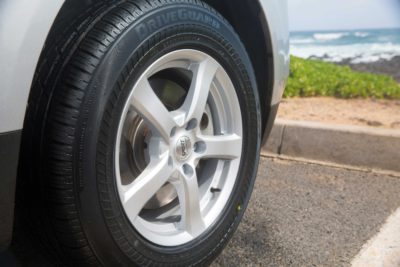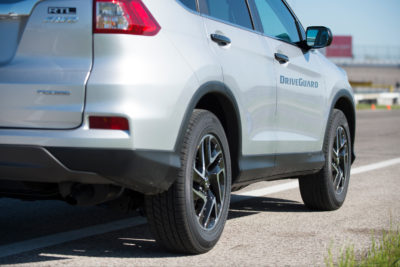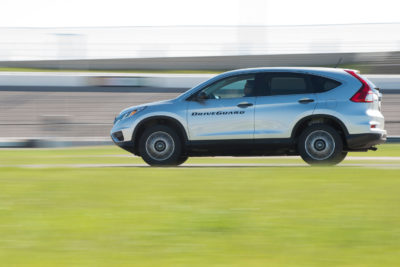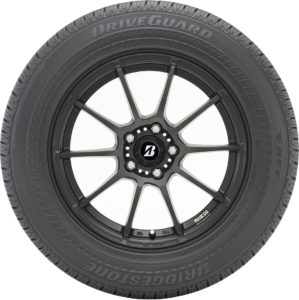 We’ve all been here: You’ve been at a drag / leather contest all night, you’re tired, you’re cranky and you haven’t eaten all day just so you could squeeze into your chaps or chiffon ensemble. It’s after midnight and you swing through the drive thru for chili fries, a triple-chocolate shake and a kale salad, yet you are so tired that you accidentally hit the sharp curb near the speaker box and, wham!, you’ve just punctured a tire. All your butch friends have gone back to their parent’s basement for the night and you didn’t renew your AAA membership because you had to pay traffic court fines. Ouch.
We’ve all been here: You’ve been at a drag / leather contest all night, you’re tired, you’re cranky and you haven’t eaten all day just so you could squeeze into your chaps or chiffon ensemble. It’s after midnight and you swing through the drive thru for chili fries, a triple-chocolate shake and a kale salad, yet you are so tired that you accidentally hit the sharp curb near the speaker box and, wham!, you’ve just punctured a tire. All your butch friends have gone back to their parent’s basement for the night and you didn’t renew your AAA membership because you had to pay traffic court fines. Ouch.
Wouldn’t it have been nice to have run-flat tires that would have allowed you to drive home and deal with it all in the morning? Run-flat tires have been around a long time, and though they can often cost more than what regular tires cost, the damage would have been far less costly than if you drove on a flat tire for even a couple of miles.
 Historically, the conundrum of run-flat tires runs something like this: in order to be as puncture-proof as possible, the rubber has to be pretty thick and solid. The downside is that the added weight adversely affected performance and mileage, and often the most visible downside was that steering was compromised. In fact, often the steering with run-flat tires of old would pull noticeably, just like it does when you are driving on a flat tire. The trade-offs were considerable, and given the higher price for run-flat tires, most people just stuck with whatever was on the car when they bought it.
Historically, the conundrum of run-flat tires runs something like this: in order to be as puncture-proof as possible, the rubber has to be pretty thick and solid. The downside is that the added weight adversely affected performance and mileage, and often the most visible downside was that steering was compromised. In fact, often the steering with run-flat tires of old would pull noticeably, just like it does when you are driving on a flat tire. The trade-offs were considerable, and given the higher price for run-flat tires, most people just stuck with whatever was on the car when they bought it.
Maybe it’s time to reconsider. I had the chance last month to drive a vehicle using Bridgestone’s newly redesigned DriveGuard tires, which aren’t consider ‘run-flat’ tires but instead are ‘zero pressure’ tires because they don’t pull. (Specifically, these zero-pressure tires do not require special rims and can be installed on most makes and models.) You may have seen new commercials for the tire, showing professional archers shooting real arrows into the tire. Basically, the promise is that the tire, when flat, can be driven up to 50 miles as long as you stay below 50 mph.
 My friend at Bridgestone, driving instructor Kurt Spitzner, rode with me as I drove around Texas on a car where he intentionally pulled the tire valve off the front driver’s side tire. The ride was smooth, didn’t pull, and was essentially unremarkable, which is good. Turning was fine, and the advice is that if you have to drive on the highway, stay in the right lane under 50 mph. My concern was that the ride was so unremarkable that I could see me keep driving past the 50-mile limit in search of another drive-thru for some more chili fries. When we were done, Kurt put his hand right on the tire to prove to me that it was not scalding hot, as it would be with a regular flat tire that had been driven for a distance. (I always try to hang out with men who are butcher than I am and can handle more heat than I can.)
My friend at Bridgestone, driving instructor Kurt Spitzner, rode with me as I drove around Texas on a car where he intentionally pulled the tire valve off the front driver’s side tire. The ride was smooth, didn’t pull, and was essentially unremarkable, which is good. Turning was fine, and the advice is that if you have to drive on the highway, stay in the right lane under 50 mph. My concern was that the ride was so unremarkable that I could see me keep driving past the 50-mile limit in search of another drive-thru for some more chili fries. When we were done, Kurt put his hand right on the tire to prove to me that it was not scalding hot, as it would be with a regular flat tire that had been driven for a distance. (I always try to hang out with men who are butcher than I am and can handle more heat than I can.)
Bridgestone currently has a 30-day Buy-and-Try offer, but know that DriveGuard tires are not available for trucks. They also are not available as winter tires. Click here for more information.
 Indeed, these tires cost more than just keeping whatever was on the car when you bought it. But while bald is the new Dry Look for men, bald tires can ruin more than your night or your outfit. And when you consider that tires are the one component of your car that is easily ignored but that can easily send you into a ditch if compromised …..
Indeed, these tires cost more than just keeping whatever was on the car when you bought it. But while bald is the new Dry Look for men, bald tires can ruin more than your night or your outfit. And when you consider that tires are the one component of your car that is easily ignored but that can easily send you into a ditch if compromised …..
Perhaps you should put your energies into your on-stage performance and your social outings – and not into how you will thumb your way home after a drive-thru misfortune and all the Lyft drivers have gone to bed for the night.
